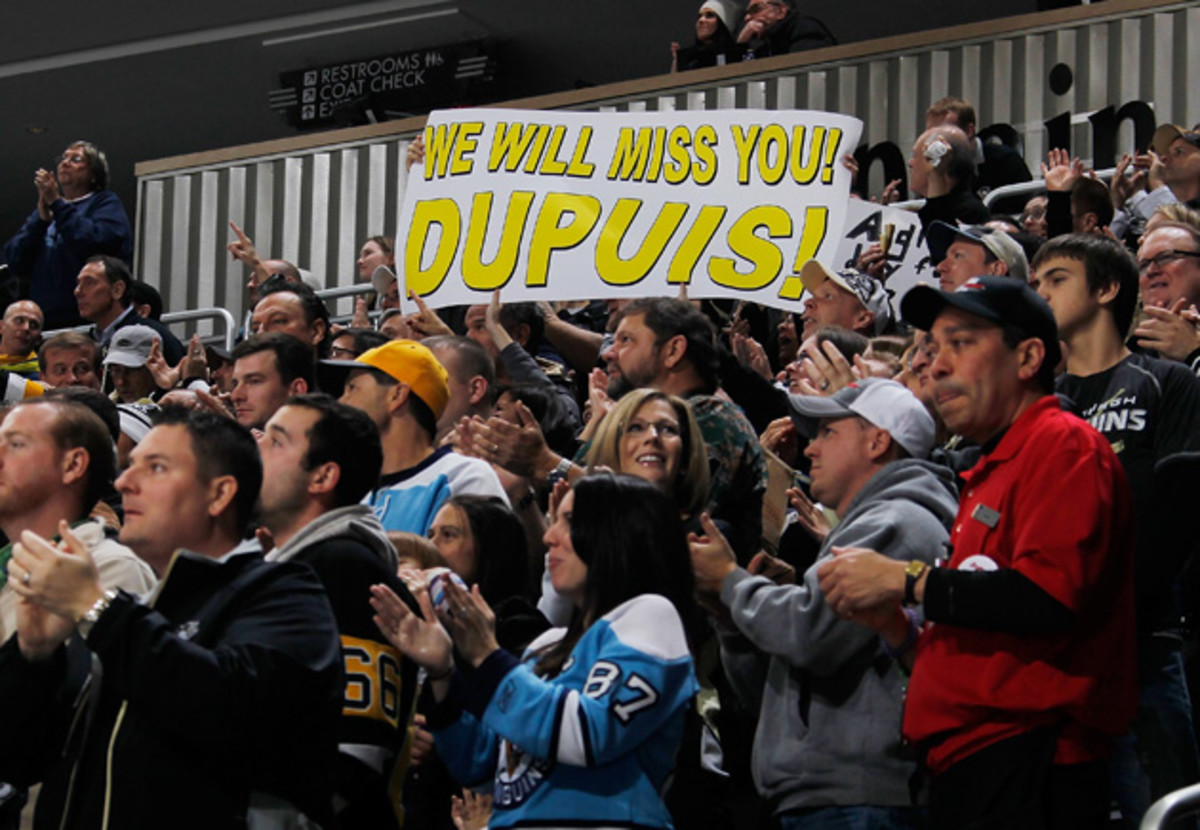For NHL players and other athletes, blood clots are a deadly threat

This story originally ran on SI.com in Dec. 2014.
On the first Saturday in August, at his off-season home in his native Finland, Kimmo Timonen settled into his couch and turned on the TV. In two months, he would begin what he had already determined would be his final NHL season. At 39, the Flyers defenseman, a four-time All-Star and the backbone of Philadelphia’s blueline for the last seven years, had signed a one-year deal in June, and he dedicated himself to training this summer for a final shot at the Stanley Cup that had long eluded him.
- MORE EDGE: Après Ski: How to recover like a champ
But on his couch that day, he remembers feeling a mild soreness in his right calf. It wasn’t terribly painful, Timonen recalls now from his home near Philadelphia. “I didn’t think about it too much,” he says. “It just felt like a cramp in my calf.” A 15-year NHL veteran, Timonen is plenty familiar with muscle cramps and dull pain. He wondered if he had pulled the muscle in the gym or if it was simply sore from overwork. The next day, though, the pain didn’t go away—it got worse. By the evening, his calf was aching so badly in bed that it kept him up most of the night. In the morning, Timonen called a friend, a physician who told him to drop by his office that afternoon.
Timonen did, but not before going to the rink and getting in his first skating session of the summer. In his two-hour workout, he remembers, his calf did not feel right, and moreover, he was winded and felt some discomfort and congestion in his chest. “I thought, Boy, am I really this out of shape?” he says. Maybe he was coming down with a cold, he thought.

Still, his symptoms didn’t cause him much concern. Even when his friend diagnosed the blood clot in his calf, Timonen says he needed some persuading to undergo a chest scan. “I’m so glad he talked me into it,” he says.
The scan revealed clots in both of Timonen’s lungs. They had most likely broken off the one in his calf, traveled up through his blood stream and pumped through his heart before becoming lodged in the smaller vessels of the lungs. Such clots are known as pulmonary emboli. They prevent blood from circulating through the lungs, and in some circumstances, they can lead to death.
***
Blood clots in themselves are not necessarily worrisome; in fact, they’re an essential part of the healing process. When blood vessels are damaged, platelets gather at the site to stem bleeding, and then proteins in the bloodstream form a strong barrier to stop it altogether. This biological process happens naturally any time you nick yourself shaving or bang your knee hard on the edge of the bed.
Lightning goalie Andrei Vasilevskiy sidelined by blood clot
), that poses the greatest risk for life-threatening pulmonary emboli. In the inner veins, which are much wider than those near the surface of the skin, blood clots can grow larger and the blood flow is stronger. Think of a garden hose versus a water main. If a sizable piece of the clot breaks off, it’s swiftly carried up the blood stream to the heart and the lungs.
It’s a scary situation that has affected NHLers such Jed Ortmeyer (in 2006), Panthers winger Tomas Fleischmann (in 2011) and recently sidelined Penguins winger Pascal Dupuis in January and then again last month. Just this week, 38-year-old Penguins goalie Tomas Vokoun announced his retirement after having missed much of the 2013-14 season with blood clots that nearly killed him. They were Vokoun's second brush with the affliction. He was diagnosed with one in his pelvis in 2006.
But the threat is not limited to the ice. Discovering pulmonary emboli, clots that have traveled to the lungs, cut Cleveland Cavaliers center Anderson Varejao’s season short last January, and ultimately ended Browns guard Jason Pinkston’s career last year.
Professional athletes are not unique in developing DVT/PE. It’s estimated that half a million people are affected by the condition in the United States each year, and it’s relatively common in the octogenarian population. But there are certain risk factors that feature prominently in the pro athlete’s lifestyle: namely injury, immobilization, dehydration and long-distance travel (especially by air).

In contact sports like hockey, hard hits can cause trauma, large and small, internally. And then sitting on long, cross-country flights—particularly after games when dehydration causes the blood to thicken—inhibits circulation, often causing blood to pool in the legs, where platelets may gather and form a clot. It’s not common, but given the constant travel of professional athletes, their chances of developing a clot are heightened.
Often, though, blood clots in athletes stem from surgery and the subsequent immobilization. Varejao developed a clot shortly after surgery on his right quadriceps; Dupuis’s initial episode with DVT came after ACL reconstruction last December.
“[Undergoing] any of these surgeries—like joint surgeries, where you’re going to be laid up for a period of time and you’re not able to use your legs like you normally would—does predispose you to getting these clots,” says Dr. Peter Vitanzo, a sports medicine specialist with the Rothman Institute in Philadelphia.
***
Now, take those outside risk factors inherent in an athlete’s life and add a genetic condition that predisposes a person to abnormal blood clots. That’s the combination Timonen faces. He has known about the rare blood disorder he inherited from his mother—Protein C deficiency—for more than 15 years. His brothers have it too. But none of his family members has ever suffered from DVT or an embolism, and until August, Timonen says, he hadn’t either. Protein C plays an important role in regulating the clotting process; that is, it helps stop it when it’s not necessary. Protein C deficiency, then, is one of a handful of genetic conditions, including Protein S deficiency and Factor V Leiden mutation, which increase the risk of blood clots.

Timonen has dealt with superficial clots before, in vessels near the surface of the skin, and he had a particularly bad one form in his ankle, when he blocked a shot during the 2008 playoffs and missed four games. But he says, “That didn’t have anything to do with [his blood disorder or the DVT in August].” Still, he went on blood thinners for four months after that blocked shot ruptured an artery. But he was able to come back and play six more years in Philadelphia; he won the team award for best defenseman in four of those seasons.
He’s back on the blood thinners now, taking a pill a day, waiting to see if the clots in his lungs have broken down naturally. Six months on anticoagulants is the protocol, and while he can exercise—bike, jog, play tennis—and otherwise lead a normal life, he cannot play hockey. On blood thinners, it can take more than 15 minutes to stop bleeding from a simple paper cut. So the trauma inherent in contact sports like hockey—not just bleeding on the surface but also, of more concern, bleeding internally—makes playing on blood thinners an absolute non-starter.
San Antonio Rampage). “I just didn’t feel like I was ready to be done,” he says. “I still felt like I could compete, and I wanted to play as long as I could.”
So for that, Timonen still retains a bit of hope that this isn’t quite the end of his career. “This was going to be my last year of hockey anyway, but I’ve been in this sport for so long, you kind of want to leave this game on your own terms,” he says. “Not like this.”
He will undergo more scans in the new year to see if the clots are gone, and if he can come off the medications that prevent him from playing the game he loves. But he is also ready to accept it if they are not, and he cannot.
“If the doctor says it’s not safe, obviously, I’m not going to go out there and do this,” Timonen says. “But if there’s a safe way for me to go out there, finish the season and hopefully [make the] playoffs, maybe [I could] retire on my own terms.”
